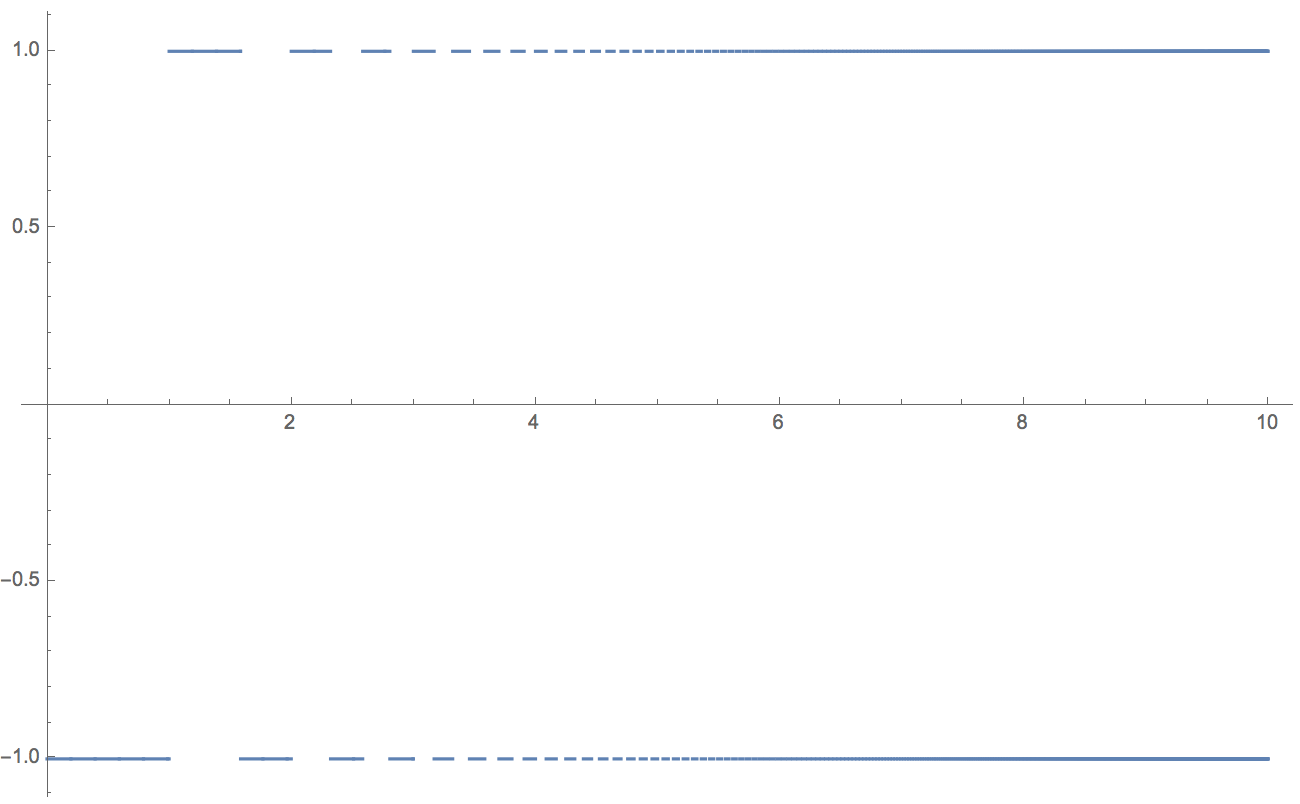Here's another one over the reals. The idea is very similar to S M Blinder's approach - we have to deal with an integral that Mathematica does not appear to like.
Plot[Sign[Sin[Pi 2^x]], {x, 0, 10}, PlotPoints -> 5000]
This function oscillates faster and faster, and jumps from -1 to +1.

So it obviously does not converge. It turns out that Mathematica cannot directly integrate this to infinity. We can only get the first couple of steps:
Table[Integrate[Sign[Sin[Pi 2^x]], {x, 0, k}], {k, 1, 4}]

or
N[%]
{-1., -0.830075, -0.741434, -0.696551}
But it can determine the roots of the sin function.
Reduce[Sign[Sin[Pi 2^x]] == 0 && x \[Element] Reals, x]

Between the zeros the function is constant -1 or 1. Note that the zeros are between consecutive
$\log(k)/\log(2)-\log(k+1)/\log(2)$ so we can calculate the Integral as the limit of the following sum:
Limit[Sum[(-1)^(k + 1) (Log[ k]/Log[2] - Log[1 + k]/Log[2]), {k, 1, j}], j -> Infinity]
which evaluates to

or -0.651496.
So, the integral is finite and the function does not converge. The example given by S M Blinder is easier, because Mathematica evaluates the integral, but I found this example also instructive, because we solve it without using direct integration. (At least if I haven't made a mistake somewhere.)
My feeling is that this is the right result. There is, however, this calculation:
Integrate[Sign[Sin[Pi 2^x]], {x, 0, k}, Assumptions -> {x \[Element] Reals && k \[Element] Reals}]
which evaluates to

and hence does not converge, i.e.
Limit[k/Sign[Sin[2^k \[Pi]]], k -> Infinity]
evaluates to
Interval[{-\[Infinity], \[Infinity]}]
So, I might have made a mistake after all. It is, however, weird that the Integral evaluates to something that is basically proportional to
$k$. That does not appear to make sense. I must admit that the following baffles me a bit:
Evaluate[Integrate[Sign[Sin[Pi 2^x]], {x, 0, k}, Assumptions -> {x \[Element] Reals && k \[Element] Reals}]]
(*k/Sign[Sin[2^k \[Pi]]]*)
and
Table[Integrate[Sign[Sin[Pi 2^x]], {x, 0, k}], {k, 1, 4}]
(*{-1, -((2 (2 Log[2] - Log[3]))/Log[2]), (-11 Log[2] + 2 Log[5] +
2 Log[7])/Log[2], -((2 (13 Log[2] - 2 Log[3] - Log[5] - Log[11] - Log[13]))/
Log[2])}*)
@Ilian Gachevski , @Vitaliy Kaurov , @Daniel Lichtblau : Am I using the assumptions wrong?
Cheers,
M